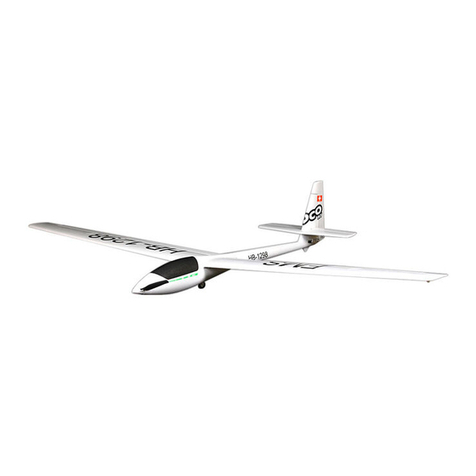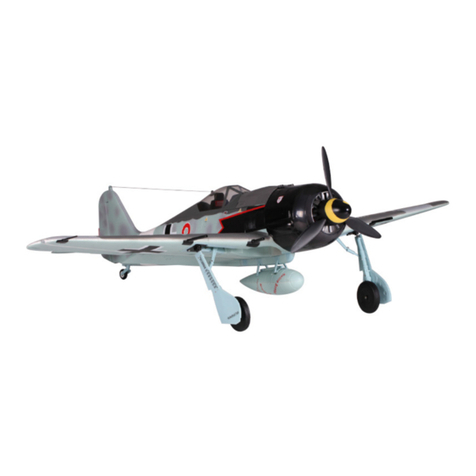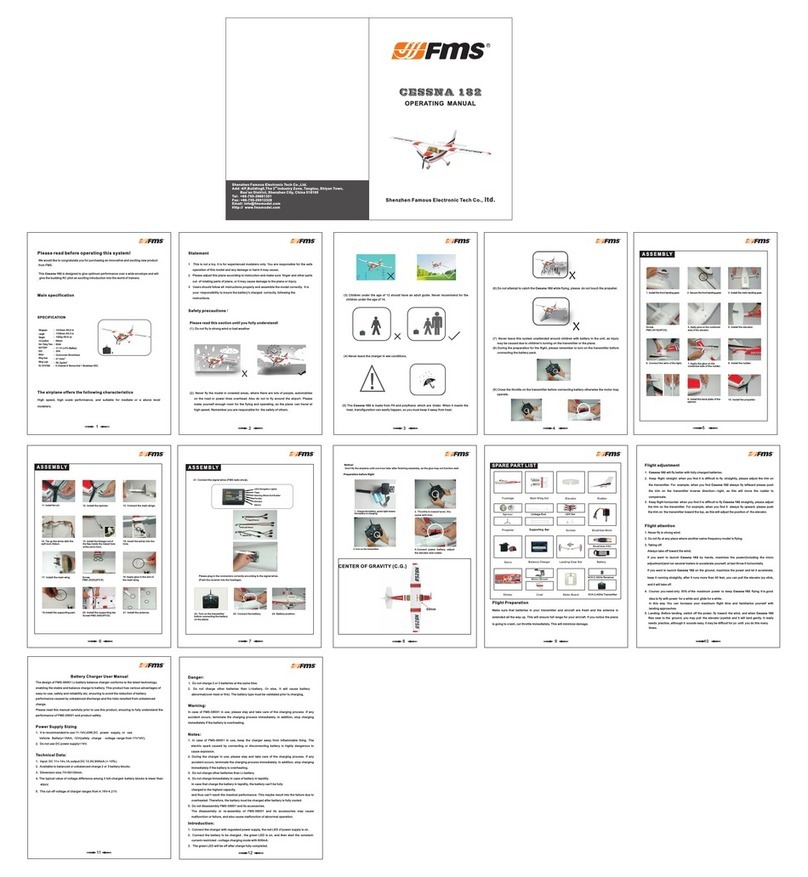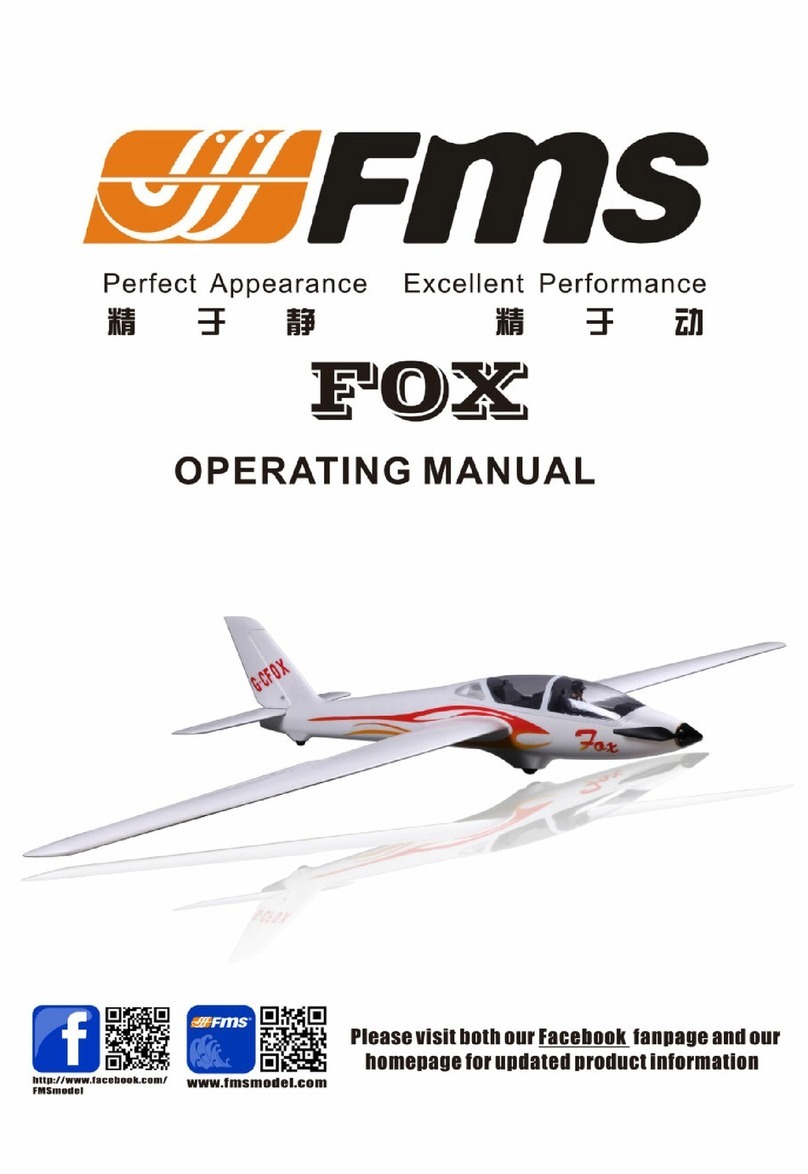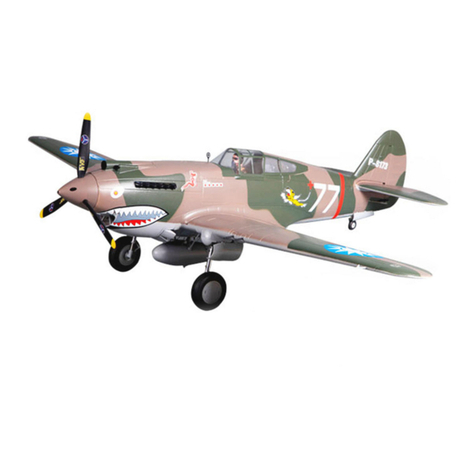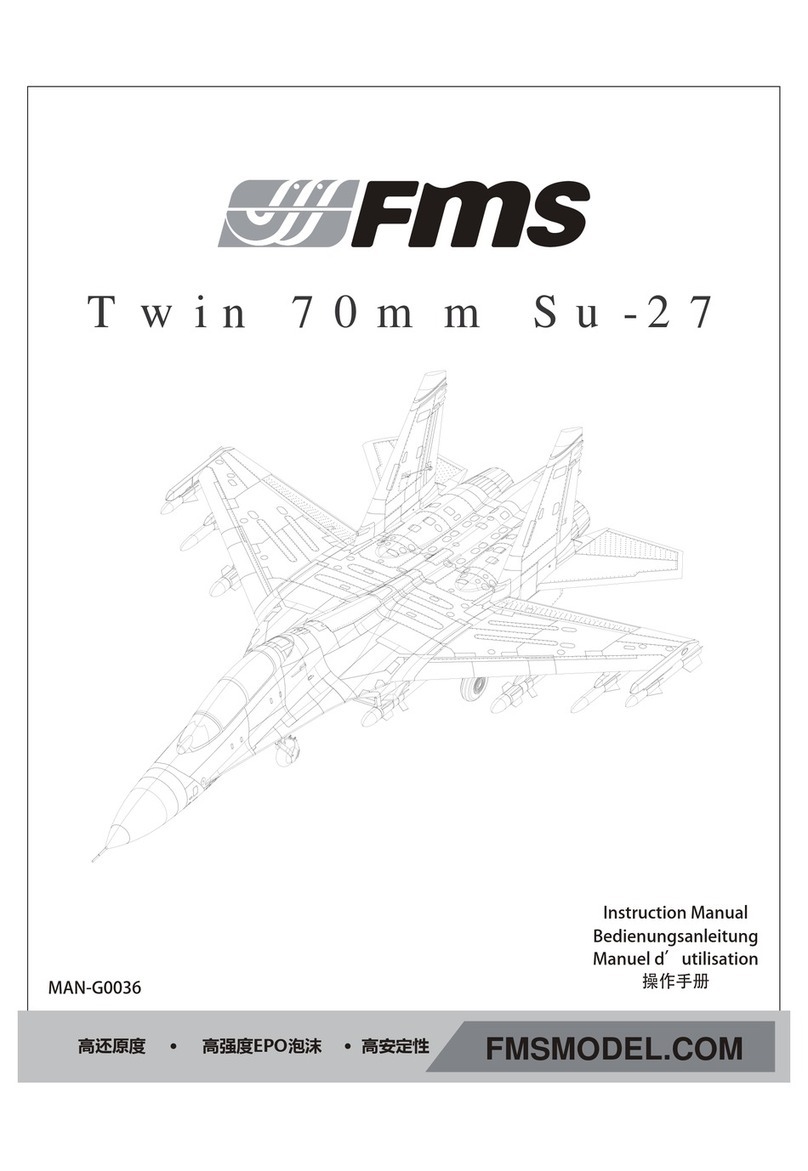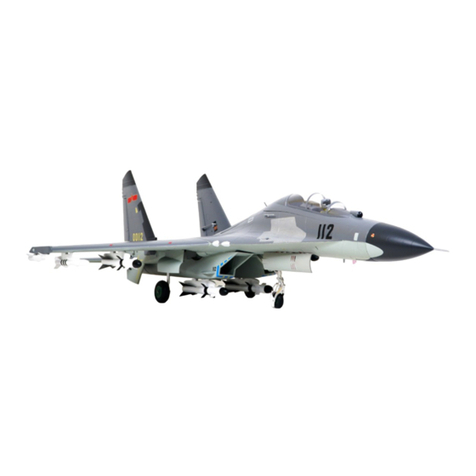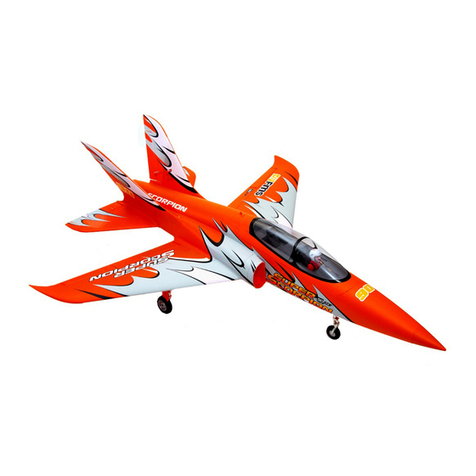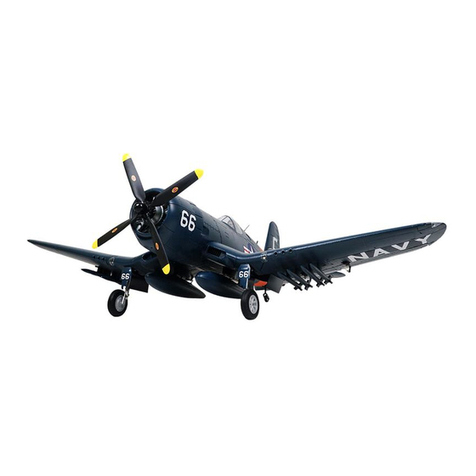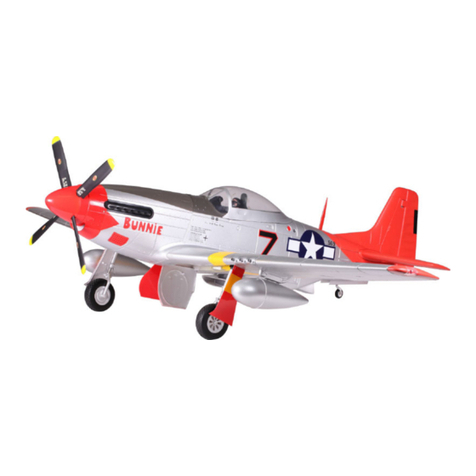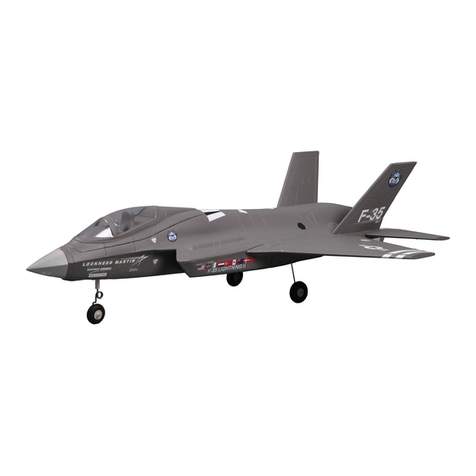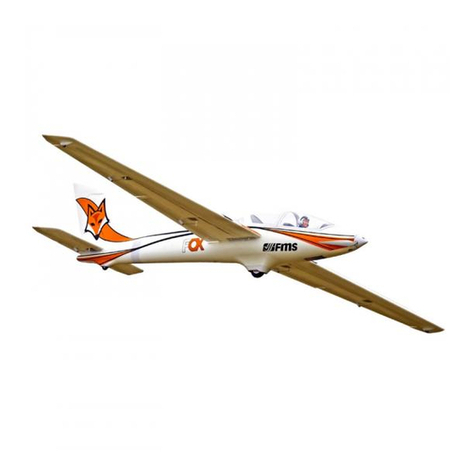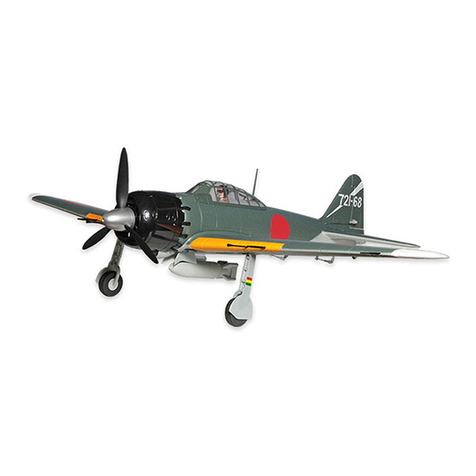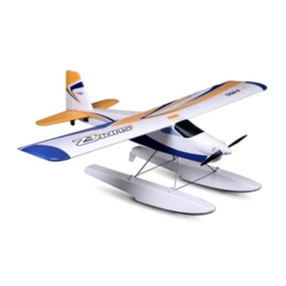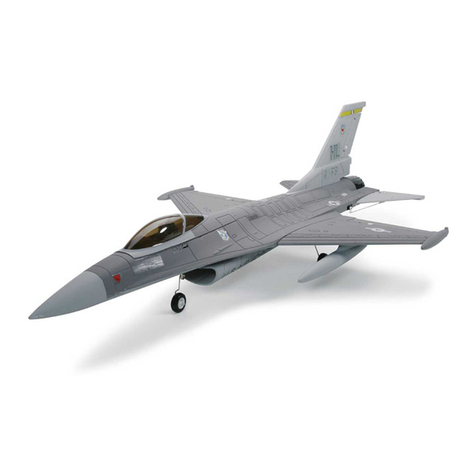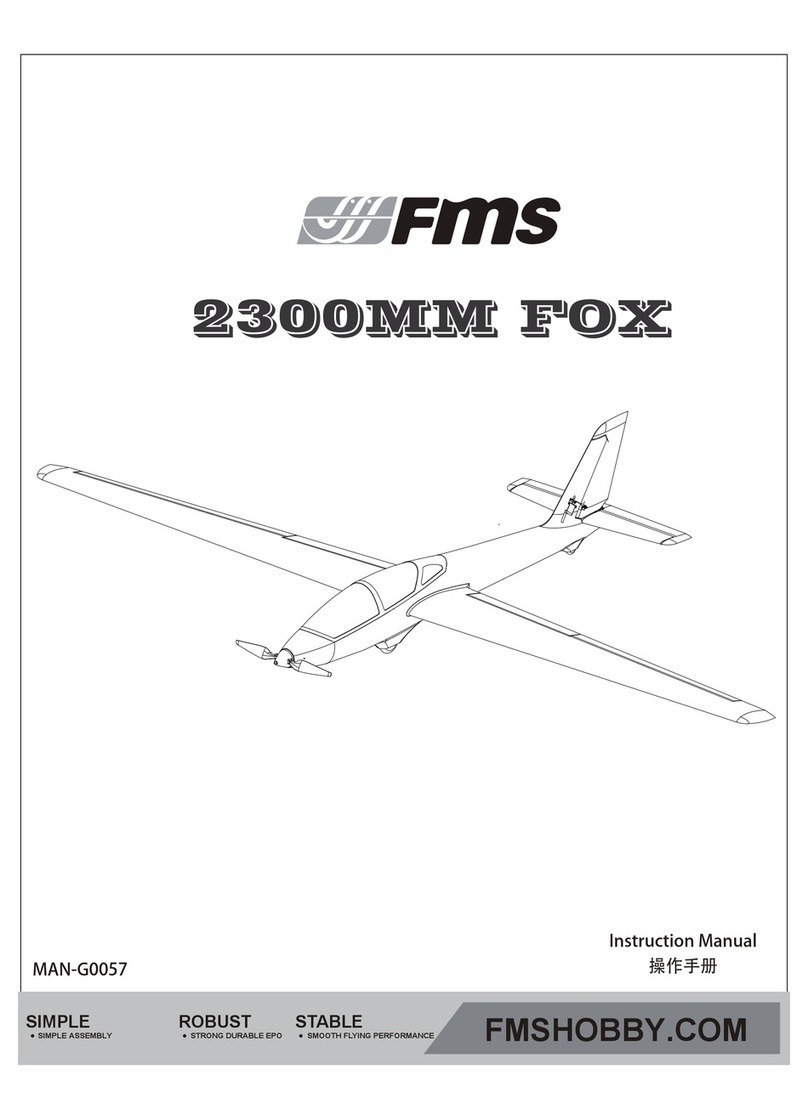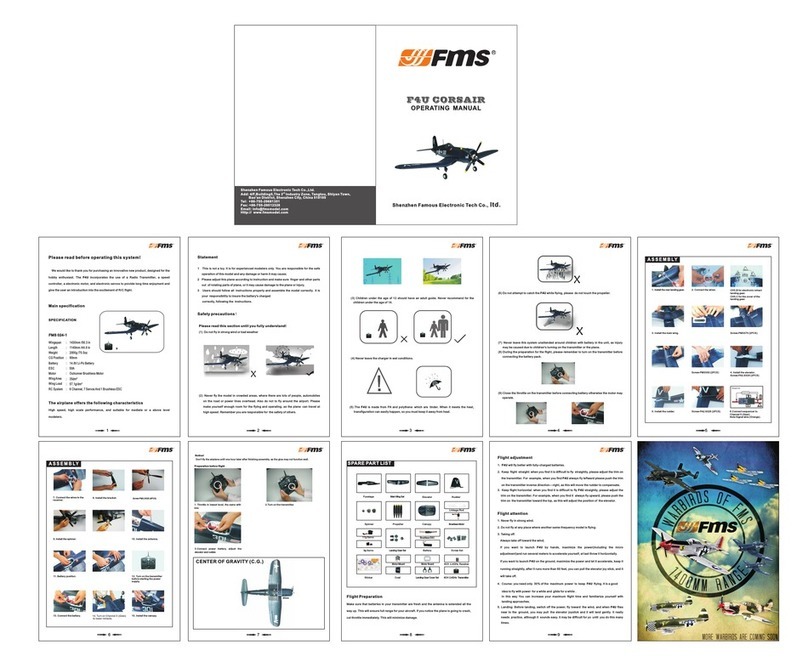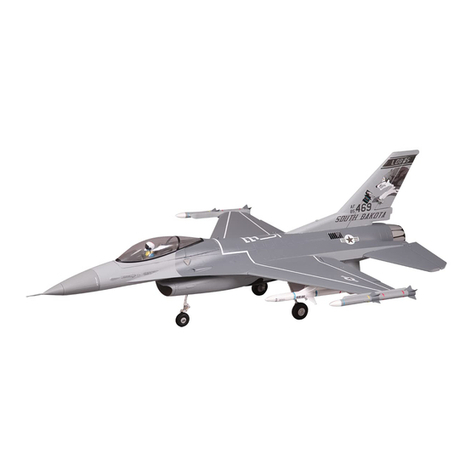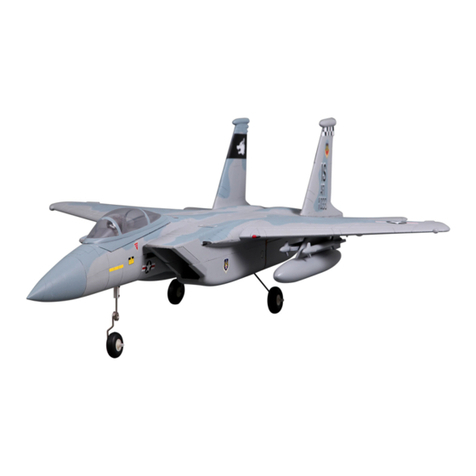
4
Before assembly, please inspect the contents of the kit. The
photo below details the contents of the kit with labels. If any
parts are missing or defective, please identify the name or
part number (refer to the spare parts list near the end of the
manual) then contact your local shop or email us: support
Kitcontents
Introduction
Kit contents
Model assembly
Battery installation
Receiver diagram
Preflight check
Clevis installation
Control horn and servo arm settings
Center of gravity(CG)
Before flying the model
Flying course
Troubleshooting
Spare parts list content
Tableofcontents
·····························································
·····
4
·························································4
·······················································5
8······ ··············································· ··········································· 8······ ··
··································
··········
·····
·····
8
····················································10
··························
·················
10
·············································10
············································11
··························································11
······················································12
············································12
Introduction
Wingspan: 1220mm(48.0in)
Overall length: 947mm/37.3 in
Flying weight: ~1000g
Motor size: 3136-1200KV
Wing load: 39.4g/dm² (0.11oz/in²)
Wing area: 25.4dm²(393.7in²)
ESC: 20A
Servo: 9g Servo x 4
Recommended battery: 3S 1300mAh 25C
Specifications
@fmsmodel.com.
As the newest member of the FMS multi-purpose aircraft lineup,
the 1220mm Ranger retains all of the fantastic features that
pilots have come to expect from FMS- stable flight characteris-
tics, easy to assemble airframe and realistic, general-aviation
inspired design.
Built with ultralight EPO foam, the large, high-winged airframe
configuration gives the Ranger low wing-loading and extraordi-
nary amounts of lift, even at slow speeds. Robust plastic struts
give extra strength to the wings during aerobatic maneuvers and
the patented high-strength tricycle landing gear makes ground
handling a breeze.
A great aircraft is nothing without a great, dependable power
system- FMS has equipped the Ranger with a 3136/1200KV
outrunner motor with 20A Predator ESC, which allows the
Ranger to climb almost vertically on demand!
In the box, the Ranger comes with two sets of landing gears- a
high-strength metal landing gear for ground operations and a
pair of floats with an integrated rudder for water operations.
Designed with a yellow and white high-visibility color scheme,
the Ranger can always be easily orientated even in gloomy,
overcast weather.
Like the Super-EZ and the Kingfisher, the Ranger is designed
with ease of assembly in mind, the longest wait time is the time
it takes to charge the battery!The Ranger is also the first FMS
aircraft to feature Reflex, an onboard flight stabilization system.
2 years in the making and after hundreds of test flights in all
conditions, the Reflex system features Stabilized (accelerometer
and gyro), Optimized (gyro-only) and Manual (off) flight
modes- a trusty co-pilot, perfect for pilots of any skill level.
Don’t miss out on one of the most revolutionary FMS aircraft,
the amphibious Ranger!
Features:
• High-spec power system: 3136/1200KV motor, Predator
20A ESC, 11.1V 1300mAh 25C battery (Included in RTF
sets)
• Two landing gear types included- Tricycle and floats!
• High strength, lightweight metal landing gear for all-ter-
rain operations.
• Screw-together and twist-lock assembly, completed in
3-10 minutes
• 10-15 minute flight times (RTF specification)
• One piece horizontal stabilizer for precise flight character-
istics
• Reflex flight control system included
A.
D.
I.
E. F.
G.
K.
J.
H.
B.
C.
A.Main wing set
B.Nose cowl
C.Main wing bolt
D.Fuselage
E.Propeller and spinner set
F.Screws and Pushrod
G.Landing gear set
H.Horizontal stabilizer
I.Radio system (RTF only)
J.Float set
K.Battery and charger (RTF only)
